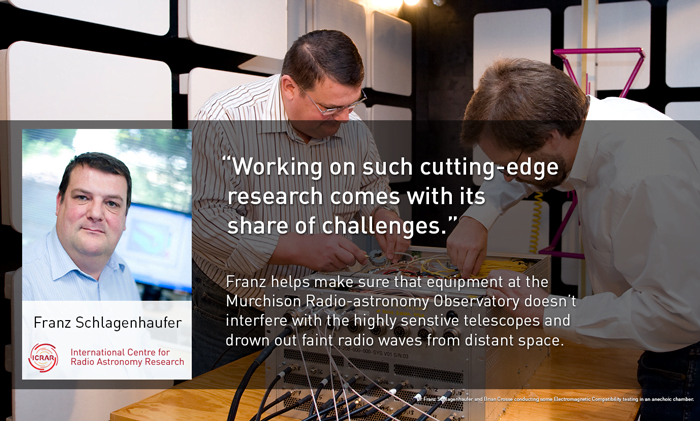His job is to make sure the radio astronomers’ own equipment does not disturb the radio-quiet environment of the Murchison Radio-astronomy Observatory and ensure the success of telescopes constructed at the site.
Dr Schlagenhaufer manages all of ICRAR’s electromagnetic compatibility needs, including the development of measurement procedures, the set up of a specialised laboratory and ongoing training and education.
“The basic measurement techniques for electromagnetic compatibility are known, but they often need to be tailored for requirements particular to radio astronomy,” Dr Schlagenhaufer said.
Since joining ICRAR from the Western Australian Telecommunications Research Institute in March 2010, Dr Schlagenhaufer has been instrumental in obtaining accreditation for ICRAR as an inspection service for electromagnetic compatibility and electromagnetic modelling.
He has also brought the Electromagnetic Compatibility Society of Australia’s annual symposium to Perth in November 2011.
Working on such cutting-edge research comes with its share of challenges.
For instance, the emission requirements for some equipment on the Murchison Radio-astronomy Observatory site are beyond the sensitivity capabilities of an electromagnetic compatibility lab.
In these cases, Dr Schlagenhaufer must ensure the shielding performance of enclosures after the electronic devices are installed without being able to conduct final tests.
“I particularly enjoy the mix between theoretical work and practical measurements,” he said.
“It is exciting to work on a high-profile project such as ASKAP or the SKA, and the electromagnetic compatibility aspects are a rewarding challenge for an engineer.”
Dr Franz Schlagenhaufer is ICRAR’s electromagnetic compatibility specialist.
